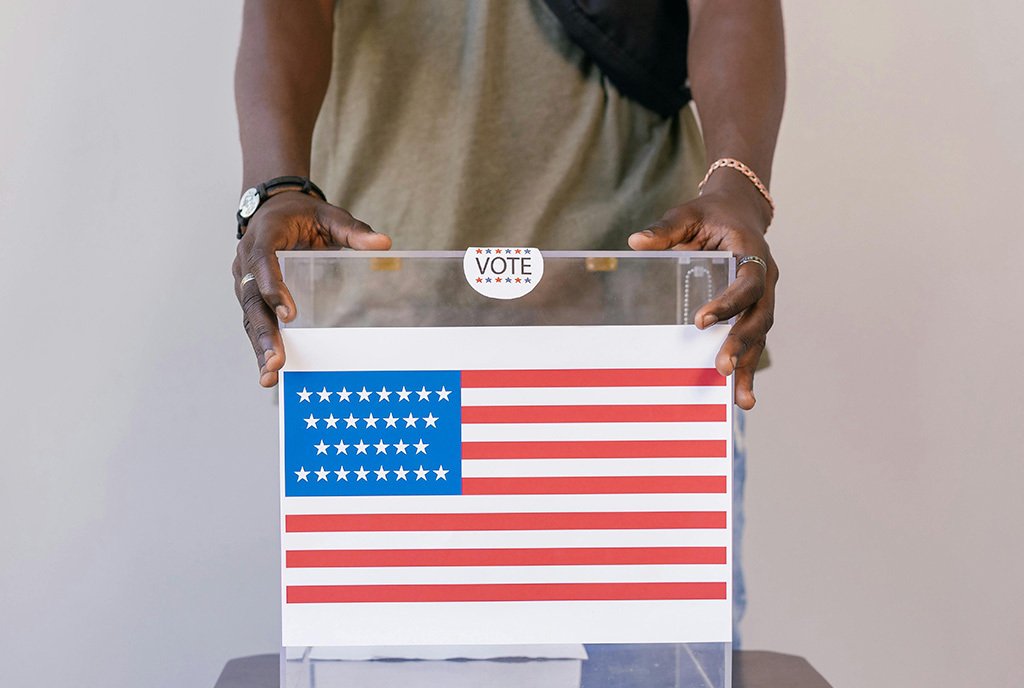
Nonprofits can play a vital role in turning out voters—and most voters want them to.
Yet only a little more than a tenth of US nonprofits reported engaging voters in 2022 despite the fact that nonprofits can, generally, engage in as much voter education and outreach as they like, as long as it’s nonpartisan.
A new report by Nonprofit VOTE (NV), an organization focused on providing resources to nonprofits to conduct nonpartisan voter engagement, argues that nonprofits can and should do more to engage with voters—and that doing so has a measurable, and not-so-subtle positive effect on voter turnout.
The report, Nonprofit Power: Building an Inclusive Democracy, is based on a study conducted by NV concerned with measuring the impact of nonprofit voter engagement on voter turnout. Its outcome was a positive 10-point shift in voters who had been engaged by nonprofits in the 2022 midterm election, increasing their likelihood of voting from 46 percent to 56 percent—a figure that rivals and, in many cases, exceeds the turnout produced by conventional political campaigns.
A little more than a tenth of US nonprofits reported engaging voters.
In an interview with NPQ, Executive Director Brian Miller notes that such shifts in elections are hard to come by. “People in political campaign work, they would die for a 10-percentage-point bump in turnout,” says Miller.
The organization’s latest study makes a powerful argument to support NV’s premise that nonprofits can increase voting by engaging with voters. And while the study doesn’t explicitly ask or explain why more don’t, it’s a question worth considering. If NV is correct, and nonprofits can have significant impacts on voter turnout, why don’t more of them engage with voters?
“People in political campaign work, they would die for a 10-percentage-point bump in turnout.”
The Power of Nonprofits to Engage
The study conducted by Nonprofit VOTE involved a subsample of about 7,000 voters among some 60,000 voters engaged by nonprofits working in partnership with NV.
Though those voters contacted or otherwise engaged by nonprofits about voting turned out by 10 percentage points more than voters who hadn’t been contacted, among various specific groups, the results were even higher. Voters of color were 12 percentage points more likely to vote; and younger voters, ages 18 through 24, were 14 percentage points more likely to vote. What’s more, an NV survey finds that most voters—seven in 10—want nonprofits to engage in such work.
The results show the power of nonprofits as trusted community members to engage voters, notes Miller.
Local nonprofits “are a known person. It’s not someone random who parachuted into your neighborhood a week before the election or some anonymous mailer that you got. It’s the place you drop your kids off for after-school programs,” says Miller. “We encourage more nonprofits to move into this space.…[They] have long-term relationships, trust, and roots in the communities they serve.”
Why Aren’t Nonprofits Engaging More Voters?
As long as they don’t engage in partisan activity, nonprofits are fully able to engage voters and encourage voting.
“You can do nonpartisan voter engagement work….You can do just about everything short of suggesting to people who they should vote for,” says Miller.
Yet only 13 percent of nonprofits reported engaging voters in 2022, according to a separate report by Independent Sector, a nonprofit that, among other things, monitors the sector (13).
Sign up for our free newsletters
Subscribe to NPQ's newsletters to have our top stories delivered directly to your inbox.
By signing up, you agree to our privacy policy and terms of use, and to receive messages from NPQ and our partners.
“Nonprofits can have more influence…if the communities that they serve are voting.”
The same report found that 43 percent of respondents indicated, incorrectly, that they believed nonprofits were not allowed to conduct nonpartisan voter engagement (12).
Of course, not all nonprofits have voter engagement as part of their mission statement. But voting, Miller emphasizes, has an importance that can transcend missions, including to nonprofits themselves.
“The underlying motivation is really about promoting equity, about building a more inclusive electorate where all voices are heard,” says Miller. At the same time, voting has real-world consequences for communities and the nonprofits that live in them.
Miller argues that low voter turnout “both diminishes the influence of the communities themselves but also of the nonprofits serving them.”
Conversely, encouraging voter turnout has positive outcomes for communities, who are more likely to have their voices, concerns, and desires heard by voting; and for the nonprofits that serve those communities.
“Most [local nonprofits] have a mission about community empowerment or uplifting the community. So [encouraging voting] very naturally goes with that,” says Miller. “But also, the nonprofits can have more influence when they go to the statehouse to advocate for policy change if the communities that they serve are voting.”
How Nonprofits Can Engage Voters
The report by Nonprofit VOTE argues that nonprofits can and should engage voters—and that voters themselves agree.
Miller notes that there are many ways nonprofits can conduct voter engagement.
NV, which serves as managing partner of National Voter Registration Day, provides resources, training, and networking to help nonprofits across the country develop voter engagement programs—including nonprofits whose mission doesn’t explicitly include voter engagement.
“We work with, in some cases, groups that you wouldn’t normally expect to be doing voter engagement: a YMCA, Habitat for Humanity, some of these groups that are a little unexpected, but they have a tremendous reach across the country,” says Miller.
From this lens, all manner of nonprofits, from food pantries to community clinics, have often-untapped potential to engage voters.
Voter engagement could be simply providing informational brochures in such places or staffing a table to help voters register and learn their polling places and upcoming election dates. It could also be more active programs engaging and following up with voters prior to elections.
“It’s thinking through where the points of engagement with your nonprofit are and what makes sense for your nonprofit,” says Miller.











